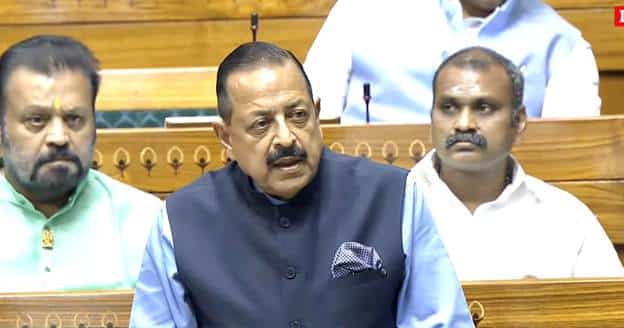NISAR to Enhance Earth Observation with Accurate Global Data Access

Union Minister of State for Science and Technology, Dr. Jitendra Singh, extended his congratulations to the scientists of ISRO and NASA following the successful launch of the NISAR satellite from the Satish Dhawan Space Centre in Sriharikota. Although he was in New Delhi for parliamentary duties, Dr. Singh participated in the historic event via live telecast, celebrating the flawless lift-off of the satellite aboard the GSLV-F16 rocket. He emphasized that NISAR represents a significant milestone in Indo-US scientific collaboration, showcasing the strength of partnership between the two nations.
Significance of the NISAR Mission
Dr. Jitendra Singh described the NISAR satellite as a “global benchmark” in scientific collaboration between India and the United States. He stated that the mission symbolizes a scientific handshake between the world’s two largest democracies. The satellite, launched aboard the GSLV-F16, marks a significant achievement as it is the first time ISRO’s GSLV vehicle successfully placed a satellite into a Sun-synchronous Polar Orbit. This mission, which is the 18th flight of the GSLV and the 12th utilizing the indigenous cryogenic stage, demonstrates India’s growing technological capabilities in space exploration.
NISAR, or NASA-ISRO Synthetic Aperture Radar, is the world’s first Earth observation satellite equipped with dual-frequency synthetic aperture radars—L-band by NASA and S-band by ISRO—on a single platform. This advanced technology will provide high-resolution, all-weather imagery of Earth’s land and ice surfaces, with the capability to revisit each location every 12 days. The satellite’s applications span various fields, including disaster management, climate monitoring, and agriculture, but Dr. Singh noted that its impact will extend even further.
Technological Advancements and Applications
The NISAR satellite, weighing 2,393 kilograms, was successfully inserted into a 747-kilometer Sun-synchronous orbit. Over its five-year mission, it is expected to deliver invaluable data for global climate science, seismic and volcanic monitoring, forest mapping, and resource management. Dr. Jitendra Singh highlighted that the open-access policy for NISAR’s data will empower not only scientists and researchers but also developing countries, disaster-response agencies, and climate change stakeholders worldwide.
He emphasized that NISAR represents a transformative shift in how critical sectors such as aviation safety, maritime navigation, coastal management, and urban infrastructure planning are approached. The data generated by NISAR will serve as a foundation for informed, science-driven decisions in various fields, including shipping routes and air traffic systems.
Collaboration Between NASA and ISRO
The NISAR satellite is a product of deep collaboration between NASA and ISRO. NASA contributed the L-band radar, GPS receiver, high-rate telecom system, Solid-State Recorder, and a 12-meter deployable antenna. In contrast, ISRO provided the S-band radar, the spacecraft bus, the GSLV-F16 launch vehicle, and associated systems and services. The mission, which has an estimated cost of over $1.5 billion, is jointly funded by both agencies, highlighting the strength of their partnership in advancing space technology.
Dr. Jitendra Singh concluded by stating that under the leadership of Prime Minister Narendra Modi, India’s space program is evolving from utility-based missions to knowledge-driven initiatives. He remarked that missions like Chandrayaan and NISAR are not merely about launching satellites; they are about opening new avenues for global science, sustainability, and shared progress.
Observer Voice is the one stop site for National, International news, Sports, Editor’s Choice, Art/culture contents, Quotes and much more. We also cover historical contents. Historical contents includes World History, Indian History, and what happened today. The website also covers Entertainment across the India and World.

